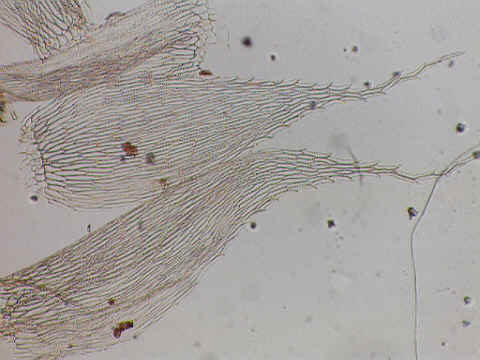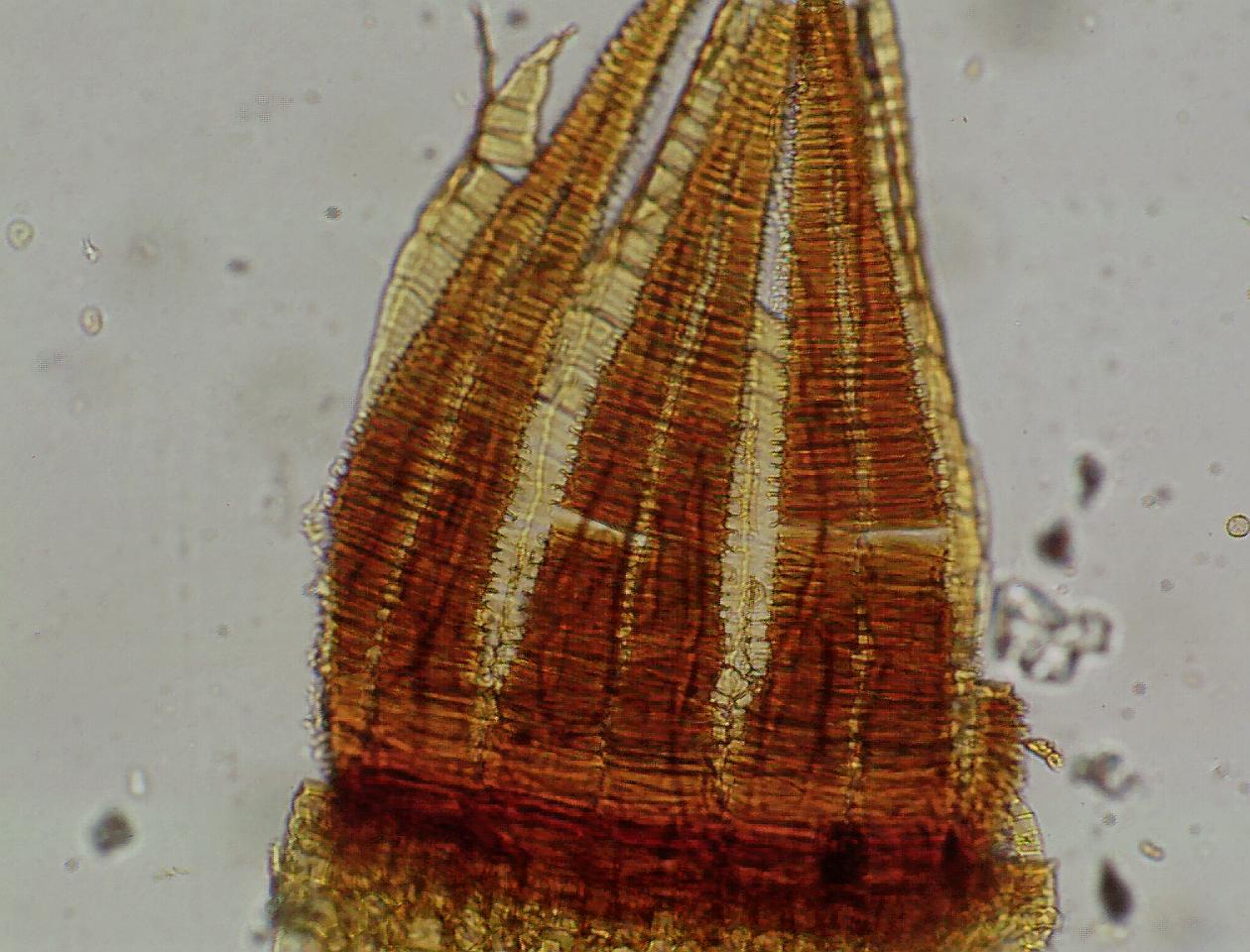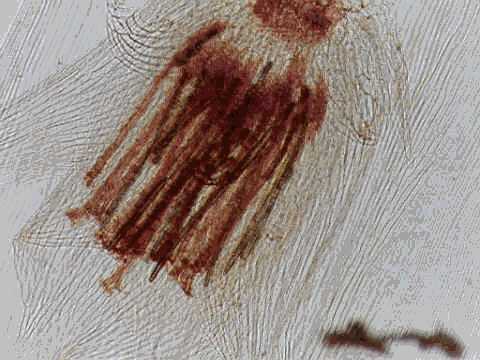|
|
|
|
|
|
NSF-PEET Project in Systematic Bryology Special Project |
|
Revision of the Moss Genus Rhynchostegiopsis
C. Mull. (Leucomiaceae) for NSF-PEET training at
Missouri Botanical Garden Michelle Judith Price |
|
Introduction |
|
|
Generic
Description |
|
|
Illustrations |
|
|
Keys
to Species |
|
|
Digital
Images of Species |
|
|
Names
in Rhynchostegopsis |
|
|
Distribution
Maps |
![]()
|
Rhynchostegiopsis was first described by Carl
Muller in 1897 based on a specimen from Bolivia. It currently contains five
species (R. brasiliensis, R. carolae, R. costaricensis, R.
flexuosa and R. tunguraguana). The genus is restricted to the
neotropics. It is found from southern Mexico, Central America, the Caribbean,
northern South America and southeastern Brazil. Plants are found in damp
habitats usually on decayed logs, soil and less frequently on roots and trees
in montane forest zones. |
|
Rhynchostegiopsis is marked by: (1) serrate
leaf margins; (2) lax and elongate median cells; (3) two celled axillary hairs;
(4) furrowed exostome teeth that are horizontally striate below; (5) well
developed endostomial cilia; (6) rostrate operculae; and (7) cucullate
calyptrae. The
genus lacks: (1) costae; (2) alar development; (3) pseudoparaphyllia; (4),
paraphyllia; (5) leaf cell ornamentation; (6), central strands; and (7) a
hyalodermis. The
characters that are 'lacking' in combination with the morphological
characters that are present in the genus help define Rhynchostegiopsis
and align it with the Leucomiaceae. Rhynchostegiopsis is interesting
since it shares morphological features with two large families, the
Hookeriaceae and the Hypnaceae. Five species are recognised in Rhynchostegiopsis
in this work and the genus has been maintained in the Leucomiaceae
(Hookeriales) based on the gametophytic features it shares with other genera
in this small family (Leucomium, Tetrastichium and Philophyllum). |
![]()
|
Plants small to large, glossy, pale green to
yellow-green or golden with age; forming dense to thin mats.Stems
fragile to sturdy, sometimes dark coloured, creeping or spreading,
subpinnately to irregularly branched, complanate-foliate, lateral and dorsal
leaves often slightly differentiated; in cross-section cells homogeneous,
large and thin-walled, central strand absent, hyalodermis lacking;
paraphyllia and pseudoparaphyllia absent; axillary hairs two-celled, basal
cell small and brown, upper cell enlarged and hyaline; rhizoids dark red,
smooth, clustered underneath stem, at base of and abaxially to the leaf
insertion. Leaves spreading, erect spreading or falcate, usually
crowded, not much contorted wet or dry, symmetric, not decurrent; lanceolate,
oblong-lanceolate, ovate to ovate-lanceolate, flat to slightly concave below,
flat above, apices short to long-acuminate or flexuose; lamina unistratose;
margins plane, entire below, sharply serrate to serrulate above to sometimes
sub-entire; ecostate; laminal cells smooth, walls non-porose; median leaf
cells lax to firm, long-linear to long-hexagonal throughout; alar cells
un-differentiated; basal cells slightly broader and longer than median cells;
upper marginal cells conspicuously or slightly enlarged in comparison to
median cells. Asexual propagula infrequent, in clusters on dorsal leaf
surface. Dioicous. Perigonia lateral, leaves smaller
than but otherwise similar to perichaetial leaves. Perichaetia
lateral, conspicuous or inconspicuous; leaves erect with spreading apices,
ovate to ovate-lanceolate, apices almost entire to serrate, sometimes
flexuose; ecostate; median cells long-hexagonal to long-linear, basal cells
shorter and broader, alar cells not differentiated. Setae
singular, long, smooth to sometimes roughened just below base of capsule,
reddish to dark red. Capsules exserted, inclined, horizontal to
pendant; cylindric, smooth, neck undifferentiated; exothecial cells
subquadrate to short rectangular, collenchymatous with horizontal walls
usually thicker than vertical walls; stomata at base of urn, superficial;
opercula long-rostrate from a conic base; annulae with several rows of
cells, deciduous. Peristomes double, exostome teeth 16,
narrowly-triangular, finely papillose above, front with narrow median line,
plates densely horizontally striate; endostome basal membrane high, segments 16,
narrowly triangular, almost as long as exostome teeth, keeled, smooth to
finely papillose, often narrowly perforate, cilia 1-2(3). Calyptrae
cucullate, naked, smooth. Spores spherical, finely papillose. |
To
Key and Digital Images of Rhynchostegiopsis
![]()
![]()
Pages
Designed by Michelle Price, April 2000.



